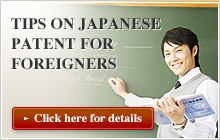[2] Changes in the Employment Forms of Japanese Patent Attorneys (benrishi)
Looking at the distribution of Japanese patent attorneys by region, 5,190 patent attorneys (equivalent to 56.8% of the total number of them) reside in Tokyo Metropolitan, followed by 1,453 (15.9%) in Osaka Prefecture, 689 (7.2%) in Kanagawa Prefecture, and 447 (4.9%) in Aichi Prefecture, thus making excess concentration of patent attorneys in Tokyo Metropolitan outstanding (see Fig. 9). This biased distribution of patent attorneys known as benrishi results from the concentration of corporate intellectual properties divisions in metropolitan areas.
Looking at the distribution of Japanese patent attorneys by region over the past 5 years, the percentage of patent attorneys who reside in Tokyo Metropolitan has gradually decreased from 59.0% in 2008 to 56.8% in 2012 (see Fig. 10). The percentage of those who reside in Osaka Prefecture has also gradually decreased from 16.1% in 2008 to 15.9% in 2012. In contrast, the percentage of patent attorneys who reside in Kanagawa, Aichi, and Hyogo Prefectures has increased from 6.47%, 4.57%, and 2.07% in 2008 to 7.21%, 4.89%, and 2.22% in 2012, respectively. This indicates that patent attorneys tend to disperse into urban and rural areas other than those in Tokyo Metropolitan and Osaka Prefecture. It is believed that a growing diversification of the employment forms of patent attorneys due to the expansion of their scope of service is behind the said trend.


Japanese patent attorneys working outside of Japan has also increased in number. Looking at the trend of distribution of Japanese patent attorneys so-called benrishi outside of Japan over the past 5 years by region, the number of Japanese patent attorneys working outside of Japan has rapidly increased from 29 in 2008 to 58 in 2012, i.e., doubled in a period of 4 years (see Fig. 11). Particularly the number of Japanese patent attorneys working in Europe has increased from 4 in 2008 to 18 in 2021, i.e., it has been 4.5 times as much in a period of 4 years. The assumed reason for such increase is that the number of patent applications between Europe and Japan has increased.

How have the employment forms of Japanese patent attorneys been changing? Fig. 12 shows the employment forms of Japanese patent attorneys in 2012. Looking at the number of Japanese patent attorneys by employment form, patent attorneys who are an employee of a patent firm or patent professional corporation are the most in number (3,724 in number, equivalent to 40.7% of the total number of them) (see Fig. 12). Patent attorneys who are an owner of a patent firm or patent professional corporation are 2,723 in number (29.7%), those who are a joint owner of a patent firm are 713 in number (7.8%), those who are an employee of a corporation is 1,812 in number (19.8%), and those who are an employee of a law firm or legal professional corporation are 77 in number (0.9%).
Looking at the trend of the number of Japanese patent attorneys by employment form over the past 5 years, the percentage of patent attorneys who are an employee of a patent firm or patent profession corporation has increased from 39.4% in 2008 to 40.7% in 2012 (see Fig. 13). In contrast, the percentage of patent attorneys who are an owner of a patent firm or patent profession corporation has decreased from 32.0% in 2008 to 29.7% in 2012. Furthermore, the percentage of patent attorneys who are a joint owner of a patent firm has decreased year after year from 9.8% in 2008 to 7.8% in 2012, while the percentage of those who an employee of a corporation has increased year after year from 17.2% in 2008 to 19.8% in 2012. This shows that an increase in the number of patent attorneys whose years with registration kept in the patent attorney’s register are short has led to an increase in the percentage of patent attorneys who are an employee of a patent firm or corporation and a decrease in the percentage of those who are an owner of a patent firm, etc.


As seen from the above, an increase in the number of patent attorneys who passed the patent attorney examination has led to an increase in the percentage of those who are an employee of a corporation. In 2011, the Japan Patent Office conducted a questionnaire survey of Japanese large-, and small and medium-sized companies to identify whether or not they need to have patent attorney(s) in their own organization. Fig. 14 shows the results of answers from large-sized companies, while Fig. 15 shows those from small and medium-sized companies. 47% of the large-sized companies answered "Need". In other words, nearly half of the large-sized companies answered that they need to have internal patent attorney(s). In contrast, small and medium-sized companies that answered "Need" remain at a low percentage, i.e., 19%.


Furthermore, users that answered they needed to have patent attorney(s) reffered to as benrishi in the self-organization answered the reasons for them to consider it needed to do so as shown in Fig. 16. According to the results of this questionnaire survey, among reasons for considering it needed to have patent attorney(s) in the self-organization, "Need to have patent attorney(s) well-versed in the internal business operation of the self-organization" has the largest percentage (71.3%), followed by "Availability of patent attorney’s high ability for internal business operation" (62.20%).

Patent attorneys who are an employee of a patent firm have also increased in number. Looking at the trend of the number of patent firms in Japan over the past 5 years, the number of patent firms in Japan has increased year after year from 3,745 in 2008 to 3,876 in 2012 (see Fig. 17). When averaged, the number of patent firms opened per year comes to 100. Particularly the number of patent firms opened has increased year after year. 41 patent firms were opened during the period of 2008 to 2009 and 165 patent firms between the period of 2011 and 2012.
The average number of patent attorneys per patent firm decreased from 2.23 in 2008 to 2.22 in 2009, but increased after 2009 to reach 2.36 in 2012 (see Fig. 18).


Further, looking at the breakdown by the number of patent attorneys in a patent firm, patent attorneys working for patent firms with only one patent attorney have the largest percentage with 29% (see Fig. 19). The percentage of patent attorneys working for patent firms with two patent attorneys is 11% and the percentage of those working for patent firms with three patent attorneys is 8%. On the whole, for every increase in the number of patent attorneys in a patent firm, there is a decrease in the percentage of those working for it. More than half of patent attorneys are working for patent firms with four or less patent attorneys. In contrast to this, the percentage of patent attorneys working for patent firms with 10 to 15 patent attorneys is 8% and the percentage of those working for patent firms with 80 or more patent attorneys is 2%.

Looking at the trend of the breakdown by the number of patent attorneys in a patent firm for the past 5 years, the percentage of patent attorneys working for patent firms with 1 to 5 patent attorneys has decreased from 58.5% in 2008 to 53.4% in 2012 (see Fig. 20), while the percentage of patent attorneys working for patent firms with 5 to 40 patent attorneys has increased from 31.6% in 2008 to 36.7% in 2012. Furthermore, looking at the breakdown by the number of patent attorneys in a large-scale patent firm, the percentage of patent attorneys working for patent firms with 40 to 70 patent attorneys has decreased from 6.96% in 2008 to 5.57% in 2012, while the percentage of patent attorneys working for patent firms with 70 or more patent attorneys has increased from 3.10% in 2008 to 4.42% in 2012.
As a result, the above trends on the whole show that the percentage of patent attorneys working for patent firms with a small number of patent attorneys has decreased, while the percentage of those working for patent firms with a large number of patent attorneys has increased.


 Japanese
Japanese English
English


